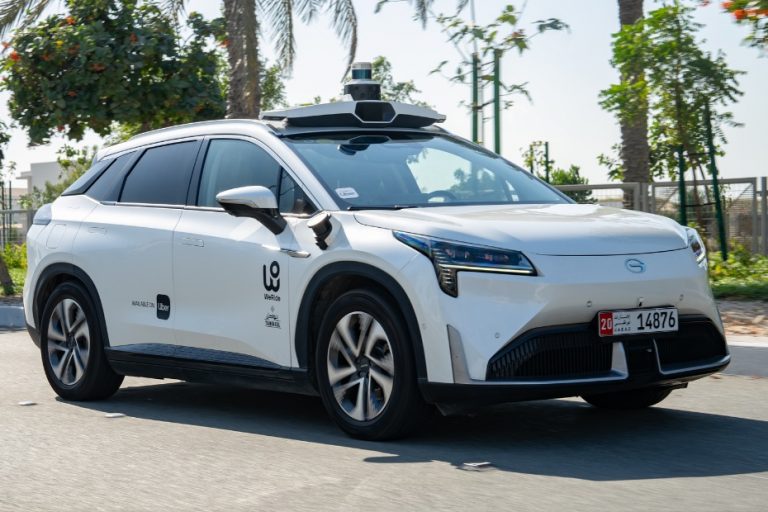
Uber’s autonomous vehicle ambitions are accelerating. The ride-hailing giant is expanding its partnership with Chinese self-driving technology firm WeRide, with plans to roll out robotaxi services in 15 additional cities outside China and the U.S. over the next five years.
This development follows their initial commercial robotaxi launch in Abu Dhabi five months ago, a venture that also involved local transport operator Tawasul.
As part of the expansion, Uber will inject $100 million into WeRide. The cash is expected to be transferred by the second half of 2025, according to a regulatory filing published Wednesday. The additional cities will include locations in Europe, with Uber integrating WeRide’s services into its app as it does in Abu Dhabi.
Register for Tekedia Mini-MBA edition 19 (Feb 9 – May 2, 2026): big discounts for early bird.
Tekedia AI in Business Masterclass opens registrations.
Join Tekedia Capital Syndicate and co-invest in great global startups.
Register for Tekedia AI Lab: From Technical Design to Deployment (next edition begins Jan 24 2026).
The deal is modeled after Uber’s U.S. partnership with Waymo. Under this arrangement, Uber handles routing and customer access via its platform, while the autonomous vehicle partner, Waymo in the U.S. and WeRide in this case, provides the AV technology. In Abu Dhabi, Uber and WeRide jointly manage the service through local fleet operator Tawasul and are also planning to expand into Dubai.
WeRide, which went public on the Nasdaq in October 2024, says the new funding will deepen its global rollout and support further development of its AV tech.
“The additional cities will focus on markets where Uber already operates and where AV regulations are favorable,” the company said in a statement.
This move is the latest in a string of autonomous partnerships Uber has pursued globally. In the past two months, Uber has announced separate deals with U.S.-based May Mobility and China’s Momenta. Over the past two years, Uber has locked in more than 15 collaborations with autonomous tech firms across ride-hailing, delivery, and freight logistics.
Uber’s most high-profile U.S. partnership remains with Waymo. The two currently offer robotaxi rides in Austin and are preparing to launch in Atlanta.
Internal Shifts Amid External Expansion
This expansion comes at a moment of internal recalibration at Uber. CEO Dara Khosrowshahi is pressing ahead with a series of workplace changes that some employees are resisting—and he’s openly fine with that.
In an interview with CNBC on Wednesday, Khosrowshahi made clear that while the company values its workforce, those unwilling to align with its direction are free to move on.
“The good news is the economy is still really strong. The job market is strong,” he said. “People who work at Uber, they have lots of opportunities everywhere.”
The CEO emphasized that Uber isn’t trying to drive people out, but that change is inevitable.
“We want them, obviously, to take the opportunity with us, to take the opportunity to learn,” he said.
The company’s latest policies require corporate staff to be in the office at least three days a week, specifically Tuesday through Thursday. Mondays and Fridays may be worked remotely. Remote workers have also been asked to return to physical offices. Additionally, the tenure requirement for a paid sabbatical has been extended, though Uber has not disclosed how many years.
“We want more people in the office,” Khosrowshahi said, framing the shift as an effort to support collaboration and mentorship. “It’s the right mix of giving your employees flexibility but also getting them to the office for those all-important teamwork tasks.”
An Uber spokesperson clarified that the policy changes are not tied to any planned layoffs and are not meant to spur attrition. Starting in June, the new hybrid work structure will go into effect.
Uber’s stance mirrors a broader trend in Big Tech where executives are reasserting workplace norms and cutting back on perks introduced during the pandemic. Amazon recently adjusted its compensation structure to reward top performers while cutting back on what underperformers earn. Meta’s Chief Technology Officer Andrew Bosworth told employees they could either “disagree and commit” or leave after the company rolled back diversity, equity, and inclusion initiatives and began trimming low-performing staff.
At Microsoft and other tech giants, job cuts have increasingly been tied to individual performance reviews.
Uber’s robotaxi push and internal restructuring highlight a balancing act: while the company invests heavily in next-generation transportation, it’s also reshaping its workforce expectations. Khosrowshahi is betting that employees who remain will be aligned with Uber’s long-term goals, both technologically and culturally.



